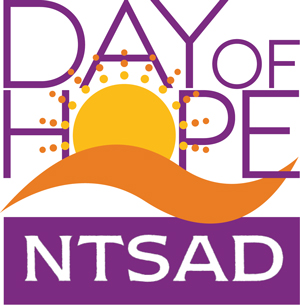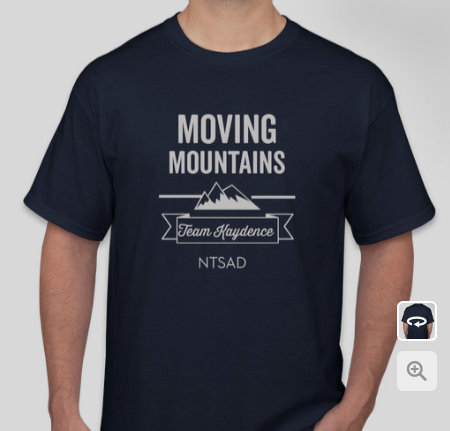Research Review 7-14-2017 - Full Reports
- Details
-
Last Updated: Friday, 14 July 2017 10:20
Novel combined gene/cell therapy strategies to provide full rescue of the Sandhoff pathological phenotype
Principal Investigator: Angela Gritti, PhD
San Raffaele Scientific Institute, San Raffaele Telethon Institute (two year study)
Reporting period: 12/15/16 – 6/14/17
The goal of this study is to evaluate gene and cell therapy approaches in the mouse model of Sandhoff disease (SD). Specifically, this study is comparing 3 therapeutic methods 1) direct intracranial lentiviral gene therapy, 2) neural stem cell transplantation (with or without gene correction of cells), 3) and bone marrow transplantation (BMT). These therapies will initially be tested individually and subsequently in combination. The investigators identified 3 milestones to be completed during the first 6 months of the project. Progress has been made on each milestone as described below:
1. To optimize BMT in neonatal SD mice.
The investigators have conducted BMT in 13 SD and 10 unaffected littermates at postnatal day 7, following myeloablation (reduction of host bone marrow to allow engraftment of donor bone marrow) at postnatal day 6. Engraftment of the donor stem cells ranged from 40-100%. The investigators are currently optimizing the myeloablation protocol to uniformly achieve the target of >70% engraftment.
A small group of BMT-treated SD mice were sacrificed at 4 months of age, corresponding to the average lifespan of untreated SD mice. Preliminary data in mice sacrificed at 4 months of age show that GM2 storage is not normalized in the central nervous system (brain and spinal cord) of BMT-treated SD mice. The remaining BMT-treated SD mice were allowed to live until humane endpoint (mice unable to walk and feed) to be monitored for survival. These mice show significant enhancement of lifespan (155 +/- 4 days) as compared to untreated SD mice (116 +/- 1 days; p<0.005). Analyses of these mice are ongoing.
2. To generate high titer lentiviral vectors expressing mouse hexosaminidase genes.
The investigators have generated 2 lentiviral vectors, one encoding the HEXA gene and the other encoding the HEXB gene. These vectors have been validated in cell culture and are now being tested in a small cohort of SD mice that will be sacrificed and analyzed 1-month post brain injection.
3. To optimize vector transduction of neural stem cells (NSCs).
The investigators transduced SD and wildtype NSCs with the lentiviral vectors mentioned above and showed a dose-dependent increase in hexosaminidase. The Hex enzyme produced in the NSCs proved to be functional as it reduced GM2 storage as compared to untreated SD NSCs.
Development and Validation of an MS-MS Method for the Detection of Hexosaminidase Deficiency in Tay-Sachs Disease
Denis Lehotay, PhD, Queens University
Description:
The aims of the project are to develop a mass spectrometry-based method for rapid screening of babies with Tay-Sachs or Sandhoff disease using dried blood spot (DBS) samples collected as part of the routine, newborn screening, usually within the first week of life.
Progress & Status:
The investigators looked at the enzyme assay protocol used for measuring hexosaminidase. In examining the enzyme assay conditions, they realized that the conditions that were used in their earlier publication describing the assay to detect Sandhoff disease in northern Saskatchewan did not work for samples from patients with Tay-Sachs disease. So, they examined every aspect of the earlier assay, and embarked on re-developing an assay that will work in the detection of both Tay-Sachs and Sandhoff patients. This work is essentially complete.
The next step is to validate this assay using about 500 normal blood spots, as well as blood spots from both Tay-Sachs and Sandhoff patients. Almost all of these blood spots have already been collected and are ready to be analyzed. The goal is to establish reference ranges for total hexosaminidase, Hex-A and Hex-B for normal patients as well as for those affected by either Tay-Sachs, or Sandhoff disease. The investigators anticipate this work to proceed quite rapidly, since the assay they developed is capable of analyzing many samples per day.
Next Steps:
The plan for the future therefore includes completing the validation of the method. This will be followed by analyzing the approximately 10,000 blood spots that they hope to receive from the Quebec newborn screening program. They are awaiting approval from the Ethics Review Board in Quebec for this study, which they hope to receive in the near future.
Rapid Identification of New Biomarkers for the Classification of GM1 and GM2 Gangliosidoses: A HNMR-linked Metabolomics Strategy
Principal Investigator: Martin Grootveld, PhD
Leicester School of Pharmacy, De Montfort University, UK (one year study)
The objective of this study is to identify biomarkers of GM1 and GM2 in plasma, CSF (cerebrospinal fluid), and/or urine that have been sampled repeatedly from affected individuals over time. This will contribute to an overall goal of a greater understanding of disease pathogenesis as well as identification of potential drug targets. The study is utilizing nuclear magnetic resonance (NMR)-linked metabolomics to screen for biomarkers in samples from GM1 and GM2 patients followed by advanced multidimensional datasets to extract detailed information. The study aims to further identify and validate potential NMR targets by liquid chromatography-mass spectrometry (LC-MS), a technique that has a higher level of sensitivity.
More than 80, 50 and 30 metabolites were detectable in the spectra acquired on urine, blood plasma and CSF respectively. The investigators are initially focused on both metabolomics comparisons of the plasma profiles of GM1 type 2 patients with those arising from a healthy human control population. 32 significantly higher and 8 significantly lower plasma levels of metabolites in the GM1 type 2 group of blood plasma samples were found and further analyzed. The key metabolic modifications up regulated in the blood plasma concentrations of GM1 type 2 group included: 3-aminobutyrate, valine, citrate and lipoprotein-associated traicylglycerols, and neuroactive amino acid glutamine. The significant down regulations included urea level, an intermediate-to-long chain function of a currently unidentified biomolecule, and an aromatic amino acid protein. Further investigations to determine the identities of these two GM1 type 2 - reduced signals are currently in progress. Some of these alterations may arise from imbalances in BCAA and/or thymine catabolism and modifications to lipid homeostasis in GM1. Metabolic distinctions between the CSF and urinary NMR profiles are currently being investigated.
Identifying Novel Therapeutics for Treating GM2 Gangliosidoses
Investigator: Beverly L Davidson, Ph.D.
The drug Miglustat (approved for Gaucher disease in 2002) does not cross the blood-brain barrier to an extent that could mediate benefit in a clinical trial in patients with late onset Tay-Sachs disease. In this study, the investigators are using a powerful drug discovery approach to identify FDA approved drugs that have improved brain penetrance while simultaneously share the same efficacy as Miglustat.
Status: They have submitted 49 samples to the University of Iowa, Genomics division for high-throughput RNA-sequencing. These samples represent 7 donors treated with the three drug treatments and controls at two different doses.
Next Steps: The investigators will query the LINCS database with the RNA-seq data, identify drugs and validate hits over the next 4-6 months. Importance: These important preliminary studies will help identify additional, brain penetrable drugs that may find use in substrate reduction therapy for the gangliosidoses.









 NTSAD awards grants for innovative research projects that may lead to treatments for
NTSAD awards grants for innovative research projects that may lead to treatments for